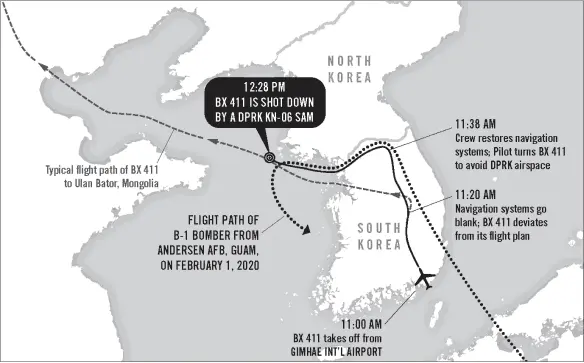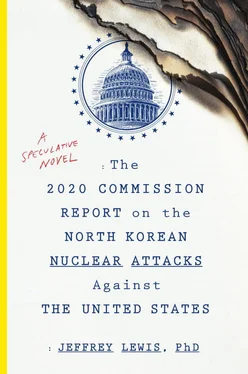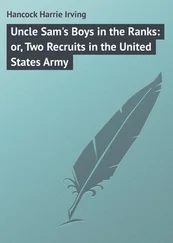Jeffrey Lewis - The 2020 Commission Report on the North Korean Nuclear Attacks Against the United States
Здесь есть возможность читать онлайн «Jeffrey Lewis - The 2020 Commission Report on the North Korean Nuclear Attacks Against the United States» весь текст электронной книги совершенно бесплатно (целиком полную версию без сокращений). В некоторых случаях можно слушать аудио, скачать через торрент в формате fb2 и присутствует краткое содержание. Город: New York, Год выпуска: 2018, ISBN: 2018, Издательство: Mariner Books, Жанр: Фантастика и фэнтези, Триллер, на английском языке. Описание произведения, (предисловие) а так же отзывы посетителей доступны на портале библиотеки ЛибКат.
- Название:The 2020 Commission Report on the North Korean Nuclear Attacks Against the United States
- Автор:
- Издательство:Mariner Books
- Жанр:
- Год:2018
- Город:New York
- ISBN:9-781-328-57391-9
- Рейтинг книги:4 / 5. Голосов: 1
-
Избранное:Добавить в избранное
- Отзывы:
-
Ваша оценка:
- 80
- 1
- 2
- 3
- 4
- 5
The 2020 Commission Report on the North Korean Nuclear Attacks Against the United States: краткое содержание, описание и аннотация
Предлагаем к чтению аннотацию, описание, краткое содержание или предисловие (зависит от того, что написал сам автор книги «The 2020 Commission Report on the North Korean Nuclear Attacks Against the United States»). Если вы не нашли необходимую информацию о книге — напишите в комментариях, мы постараемся отыскать её.
The 2020 Commission Report on the North Korean Nuclear Attacks Against the United States — читать онлайн бесплатно полную книгу (весь текст) целиком
Ниже представлен текст книги, разбитый по страницам. Система сохранения места последней прочитанной страницы, позволяет с удобством читать онлайн бесплатно книгу «The 2020 Commission Report on the North Korean Nuclear Attacks Against the United States», без необходимости каждый раз заново искать на чём Вы остановились. Поставьте закладку, и сможете в любой момент перейти на страницу, на которой закончили чтение.
Интервал:
Закладка:
In the roughly four months that elapsed between the NSC meeting on November 18, 2019, and the BX 411 episode on March 21, 2020, the Air Force conducted a series of SCATHE JIGSAW sorties without incident. In general, the missions had the same profile, one similar to that of the Reagan-era program that inspired them. A small number of aircraft would directly approach North Korean airspace in a manner that appeared to be a bombing run against a location in North Korea that was considered high-value, usually either a military site or a leadership compound. This would force North Korean air defense units to turn on their radars and pilots to scramble to aircraft, as well as initiate a general alert that went up to the highest echelons of the North Korean command. At the last moment before entering North Korean airspace, the US aircraft would turn around and head home. The United States could, in this way, probe North Korea’s air defenses for weaknesses, while also conveying to Kim Jong Un and his lieutenants that he was vulnerable to attack.
Trump administration officials were adamant that the bomber flights in SCATHE JIGSAW were an evolution of previous missions begun under Presidents George W. Bush and Barack Obama. The US Air Force had established a “continuous bomber presence” mission at Andersen Air Force Base on Guam in 2004 during the Global War on Terror. The goal was to ensure that the United States always maintained a significant number of bomber aircraft capable of conducting exercises in Asia on short notice to demonstrate that the United States remained instantly willing and able to conduct bomber strikes anywhere in the region.
In particular, Trump administration officials made frequent references to former President Obama and former secretary of state Hillary Clinton. “You are blaming us,” said one official, “but Obama did it all the time. He had dozens of bomber flights.” Another claimed, “This was Hillary Clinton’s brainchild.”
In fact, the number of bomber flights around the Korean Peninsula remained relatively consistent through 2016. What changed following North Korea’s January 2013 nuclear test was the public prominence given to routine bomber exercises. After North Korea’s 2013 test, the Department of Defense developed a program to highlight ongoing training that might strengthen deterrence on the Korean Peninsula. This work fell to the Joint Information Operations Warfare Center (JIOWC) at Lackland Air Force Base near San Antonio, which is responsible for assisting US military commanders around the world with developing what JIOWC called an “integrated approach to information operations.” JIOWC worked with US Forces Korea, US Pacific Command (PACOM), Air Force Global Strike Command, and US Strategic Command (STRATCOM) to develop an information operations strategy.
As a result, the United States began to publicize bomber flights following North Korean nuclear and missile tests. Pentagon officials highlighted a series of three flights involving B-1 and B-52 bombers in March 2013. Again, in 2016, the Obama administration publicized three more flights—one in January following the nuclear explosive test, and another two following the September 2016 nuclear explosion.
The number of bomber flights increased in number only after the Trump administration took office, with twelve publicly announced flights taking place in 2017. The number of flights fell during the thaw in 2018, before increasing to eighteen in 2019 as tensions returned. Moreover, the profile of these flights changed. Starting in 2017, operations were in some cases conducted at night and much farther north than US aircraft had operated in decades. (Prior to 2017, US aircraft tended to stay south of the DMZ rather than flying north into the international airspace between the Korean Peninsula and Japan.) These activities occurred within full view of North Korean radars.
Moreover, the mission profile of the bomber flights in the SCATHE JIGSAW air probes differed considerably from even the more aggressive bomber missions begun during 2017. The more aggressive flight plans reflected a sense that the United States needed to make an impression upon North Korea’s leadership. “There had been so many bomber flights already,” one administration official explained. “We wanted something new that would get [Kim Jong Un’s] attention.”

In most SCATHE JIGSAW missions, the bomber would fly toward North Korea, turning around at the last moment before entering North Korean airspace. In a smaller number of cases, bombers would fly along the edge of North Korea’s airspace, dipping in and out of radar contact. The eleventh mission, on March 6, 2020, was one of these. A US bomber from Guam flew northward over South Korea. As the bomber approached the DMZ, the pilot banked to the west, flying out over the Yellow Sea, along the very edge of North Korea’s airspace.
It was Air Busan’s bad luck that, on March 21, 2020, its crew, working to restore power to the ailing electrical systems, banked hard to avoid flying into North Korea, then followed a path out into the Yellow Sea that retraced the route flown by a US bomber less than a month before.
Despite the troubles on board BX 411 and the provocative nature of US bomber flights under SCATHE JIGSAW, responsibility for the loss of BX 411 and all of its passengers rests squarely with North Korea. Why did North Korea mistake BX 411 for a SCATHE JIGSAW bomber mission, and why did the crew choose to shoot it down?
The answer may rest atop a high mountain, near the North Korean city of Sariwon. In 1987, the Soviet Union supplied the Democratic People’s Republic of Korea (DPRK) with two batteries of SA-5 Gammon long-range surface-to-air missiles (SAMs). Each of these batteries came equipped with a P14 TALL KING radar. It was these two radars—one atop the mountain near Sariwon and the other situated to the east, near Wonsan—that provided the primary means by which North Korea detected aircraft approaching its airspace. Communications intercepts made available by the Department of Defense indicate that it was the TALL KING radar that first saw BX 411 approaching North Korea.
The view from the TALL KING radar was limited. What the radar operators saw was a blip on a screen—in this case, an aircraft flying without a transponder and traveling along a path that resembled that of a previous bomber flight.
Communications intercepts show that the TALL KING radar near Sariwon detected BX 411 just as the electrical problems began. At around 11:50 AM, the commander of the SA-5 missile unit placed a call to the sector commander to report a strange apparition on the TALL KING screen.
SA-5 UNIT: Track 37, unknown.
SA-5 UNIT: Bearing 3-3-0, north.
SECTOR COMMANDER: Can you identify it?
SA-5 UNIT: Transponder off. Looks like another American bomber.
SECTOR COMMANDER: Okay. I’ll send it up.
The detection was noted and passed up the chain of command. Communications intercepts show that the sector commander promptly contacted the Korean People’s Army (KPA) Air and Anti-Air Force, headquartered in Chunghwa. For SCATHE JIGSAW flights, the protocol in place required the duty officer at Chunghwa to put the sector commander in direct communication with the commander of the Air Force. But at this moment, shortly before noon on March 21, the commander was not available, so one of his subordinates took the telephone call instead.
SECTOR COMMANDER: Tell the boss we have another one.
ANTI-AIR COMMAND: He’s asleep.
SECTOR COMMANDER: It’s the morning. You might want to wake him up.
ANTI-AIR COMMAND: He had… a meeting. It went late. He took a pill.
Читать дальшеИнтервал:
Закладка:
Похожие книги на «The 2020 Commission Report on the North Korean Nuclear Attacks Against the United States»
Представляем Вашему вниманию похожие книги на «The 2020 Commission Report on the North Korean Nuclear Attacks Against the United States» списком для выбора. Мы отобрали схожую по названию и смыслу литературу в надежде предоставить читателям больше вариантов отыскать новые, интересные, ещё непрочитанные произведения.
Обсуждение, отзывы о книге «The 2020 Commission Report on the North Korean Nuclear Attacks Against the United States» и просто собственные мнения читателей. Оставьте ваши комментарии, напишите, что Вы думаете о произведении, его смысле или главных героях. Укажите что конкретно понравилось, а что нет, и почему Вы так считаете.












